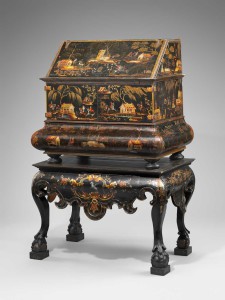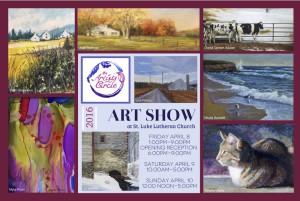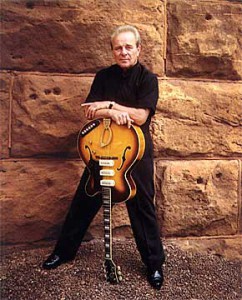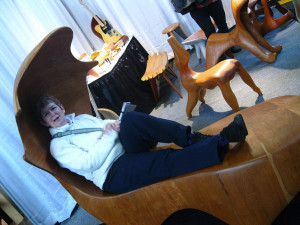Winterthur looks at Asian influence on American design
By Denny Dyroff, Staff Writer, The Times

Winterthur Museum, Garden & Library looks at the impact of Asian sensibility on American designs in its “Made in the Americas: The New World Discovers Asia” display.
Winterthur Museum, Garden & Library (Route 52 just south of the Pennsylvania state line, Wilmington, Delaware, 800-448-3883, http://www.winterthur.org) just unveiled one its most impressive exhibitions in years — “Made in the Americas: The New World Discovers Asia.”
The landmark exhibition, which is running through January 8, 2017 in the Winterthur Galleries, takes a look at the history of globalism and the colonial Americas.
“Made in the Americas: The New World Discovers Asia” is the first large-scale, Pan-American exhibition to examine the profound influence of Asia on the arts of the colonial Americas. More than 80 works — including fine furniture, textiles, ceramics, silverwork, and paintings dating from the 17th to the early 19th centuries — relay the complex story of how craftsmen throughout the hemisphere adapted Asian styles in a range of objects.
The exhibition features works from the Museum of Fine Arts, Winterthur, and on loan from public and private collections. Many of the works have never previously publicly displayed or published.
“This is the first of its kind to explore the influence of Asia in the colonial Americas,” said exhibition curator Dennis Carr at a press briefing Monday morning at the exhibit. “Globalization has its roots in the 16th century.
“America became the hub of trade activity — silk textiles from China, cotton from India, ivories from Goa and the Philippines. Then, artists began creating hybrid product. The Americas became a melting pot in the 16th century. This exhibition shows globalization through the eyes of artists.”
Carr is a graduate of the Winterthur Program in American Material Culture, and Carolyn and Peter Lynch Curator of American Decorative Arts and Sculpture the Museum of Fine Arts in Boston.
According to Carr, “’Made in Americas’ focuses on a history not taught in school. The history of the colonial Americas has long been written as a series of encounters between Europe and the New World. However, the extraordinary objects in this exhibition encourage us to think more broadly about the Americas as being at the center of this global cultural and commercial exchange. They invite us to review the powerful influences from across the Pacific that changed the course of history.”
Carr said the exhibition has served as a catalyst for reevaluation of traditional history, art history, and other curricula relative to the period. He has been working with educators at Harvard, Yale, Wellesley, Northeastern, Holy Cross, and other educational institutions that are instituting new curricula. He also spent years in research — travelling around the world and visiting 12 countries.
The fashion for Asian art as a decorative style, today known as chinoiserie (“in the Chinese taste”), was a global sensation during the colonial period, reaching its zenith in the mid-18th century. In the Americas, the style manifested itself in lavishly painted and decorated interiors, furniture, ceramics, silverwork, textiles, and paintings.
Visitors to “Made in the Americas” will see stunning objects made in Mexico City, Lima, Quito, Quebec City, Boston, New York, and Philadelphia dating from the 17th to the early 19th centuries that reflect the influence of Asian design, such as blue-and-white talavera ceramics copied from Chinese porcelain, and luxuriously woven textiles made to replicate fine silks and cottons from China and India.
Among the rarest pieces of furniture in the exhibition is a desk-and-bookcase (mid-18th century) from Mexico, which features a dramatic interior displaying chinoiserie-style painting in gold on a red background. Recalling early colonial maps drawn by indigenous artists, the inside of the doors show views of an extensive hacienda in Veracruz drawn in an indigenous style. The geometric designs on the exterior are Spanish-Islamic (Hispano-Moresque) in style.
The practice of japanning, a painted imitation of Asian lacquerwork on furniture and wall paneling using layers of varnish, gold paint, and occasionally metallic powders, spread like wildfire throughout New England, New Spain, the Caribbean, and parts of South America during the 18th century.
In North America, Boston became a major center of the production of japanned furniture – where over a dozen japanners worked before 1750 — but it was also made in Mexico, Guatemala, Brazil, and other port cities in the British colonies, such as New York, Philadelphia, and Port Royal, Jamaica. Among objects from Winterthur’s collection featuring this technique are a high chest and clock.
The indigenous lacquer of Mexico and South America was transformed by the introduction of Asian lacquerware and their European imitations. Because indigenous artisans did not have access to the tree resin used to create Asian lacquers, they developed new styles and techniques made from a mixture of oils from the aje beetle and chia seeds, clay, and organic and mineral colorants.
Furniture making in Peru featured a variety of precious materials, poignantly demonstrated in the exhibition by a group of furniture inlaid with mother-of-pearl and tortoiseshell. Described in Spanish as enconchado (shellwork), the objects recall the elaborate Japanese shell-inlaid lacquers or fine inlaid furniture imported from India, Korea, and other parts of Asia. The exhibit includes a pair of enconchado writing cabinets from Alto Peru (modern-day Bolivia).
Southeast of Mexico City, along the trade route that brought Asian goods overland from Acapulco, a ceramics tradition in the town of Puebla flourished based on imported Chinese blue-and-white porcelains.
Because artisans in Puebla did not have access to the fine materials needed to create true porcelains, they covered earthenware pottery with a thick, white tin glaze decorating it with expensive cobalt blue. In some of these ceramics, known as talavera poblana, artists replaced Chinese figures with local imagery, switching out Chinese phoenixes in favor of native quetzals (small birds with long, colorful tail feathers).
China’s growing appetite for silver helped fuel the robust trade with the Americas. Likewise, colonial silver was an important part of chinoiserie style in the New World. As imported Chinese tea became all the rage in the 18th century, a number of American craftsmen produced silver vessels in an Asian style to satisfy the demand for a host of specialized vessels, including teapots, hot-water urns, tea caddies, strainer spoons, creamers, and sugar bowls — many of which are on display in the exhibition.
Chinese silks as well as Persian and Indian textiles were prized in the Americas, and a variety of Asian and American textiles are included in the exhibition. An important part of the Asian textile trade was the wide array of colorful cottons from India, which came to the Americas through Manila as well as from European ports. The exhibition also includes an extraordinary embroidered hanging from Peru, dated 1661.
There a number of paintings in the exhibition, including a portrait from Mexico — “María de los Dolores Juliana Rita Nuñez de Villavicencio” — that shows a young noble woman wearing an embroidered dress with a menagerie of imagery from China, Europe, and the Near East.
An illustrated catalogue of essays — “Made in the Americas: The New World Discovers Asia” accompanies the exhibition. The essays were written by a team of experts, including Carr.
The exhibition first opened in Boston in 2015 to mark the 450th anniversary of the Galleon trade between the Philippines and Mexico, inaugurated in 1565 and lasting for two and a half centuries, until 1815. The Winterthur exhibition, which is organized by the Museum of Fine Arts, Boston, will feature new additions from the Winterthur collection.
Winterthur also is offering a bonus to potential visitors.
On two special “Winterthur After Hours” evenings – April 20 and May 18 – Winterthur Museum will offer “Pay What You Wish” entry beginning at 5 p.m. — offering visitors the option of setting their own admission price.
On April 20, visitors can enjoy a performance by Suspiro Flamenco dancer Liliana Ruiz in the Galleries Reception Atrium from 6-8. Ruiz was born in Mexico City where she studied ballet along with Spanish and flamenco dance.
As an added Attraction, visitors will be able to sample culinary treats throughout the evening. The food sampling will feature an assortment of delicious “small bites” showcasing the culinary influences of Asia on North, Central, and South American fare.
On May 18, the music of legendary rock band Sin City will fill the banks of Clenny Run. Food, water, wine, beer and other beverages will be available for purchase. Winterthur will offer a discounted membership opportunity to guests on these evenings.
General admission fees for Winterthur are $20 for adults, $5 for children (ages 2-11), and $18 for seniors (62 and older) and students (with valid ID).
Hagley Museum and Library (Route 141, Wilmington, Delaware, 302-658-2400, www.hagley.org) will also have an art-related event this weekend.
The 17th Annual Delaware Foundation for the Visual Arts Spring Art Show (www.DFVA.org) will be held at the Hagley Museum’s Soda House from 5:30-8:30 p.m. on April 8, 10 a.m.-5 p.m. on April 9 and 11 a.m.-3 p.m. on April 10. Tickets are $10 for Friday and $5 for Saturday or Sunday.
More than 60 professional artists from the Brandywine area will exhibit and sell original new works of art created for this event. The show features a high quality collection of original art, including paintings, sculpture, porcelain, ceramics, jewelry and limited edition reproductions.
This year’s “Honored Artist” is Charles Rowe, a Montana native who is professor emeritus at the University of Delaware. Rowe, whose work includes both realism and surrealism, has had major exhibits throughout the United States and Europe.
Other special attractions this year are a beer tasting by Twin Lakes Brewery (Friday), a reception with Charles Rowe (Saturday), a portrait painting demonstration by Olga Nielsen (Saturday), charcoal profile sketching by Helena van Emmerik-Finn (Sunday) and a raffle to win original artwork.
 On April 8, the Brandywine River Museum (1 Hoffman’s Mill Road, Chadds Ford, 610-388-2700, http://www.brandywine.org) will have a new exhibition made possible by a donor’s generosity.
On April 8, the Brandywine River Museum (1 Hoffman’s Mill Road, Chadds Ford, 610-388-2700, http://www.brandywine.org) will have a new exhibition made possible by a donor’s generosity.
The Museum will present over 25 important works of American art from Richard M. Scaife, a Pittsburgh philanthropist and former trustee of the Brandywine Conservancy & Museum of Art.
The exhibition, which runs through November 6, showcases paintings by artists that are new to the collection, such as Hudson River School painters Martin Johnson Heade, John Kensett, and Albert Bierstadt, whose luminous, contemplative views of nature influenced the grand tradition of mid-nineteenth-century landscape painting in America.
Other exciting introductions to the collection through the Scaife bequest are works by American impressionists William Merritt Chase, Theodore Robinson, and Edward Redfield, Julian Alden Weir and others. These late-19th and early 20th-century artists changed the course of American landscape painting through their adaptation of trends in European art.
Their interpretive approach to rendering their surroundings with vibrant color and energetic brushwork is amply demonstrated in the exhibition. These paintings honor Richard Scaife and his generous vision for the Brandywine. They also represent a milestone in the museum’s collection of American art.
A few years ago, Scaife left his large and varied art collection to the Brandywine River Museum and to the Westmoreland Museum of Art in Greensburg, Pennsylvania — to be divided evenly. Scaife, a news publisher and philanthropist also bequeathed Penguin Court, his estate in western Pennsylvania, to the Brandywine River Museum.
Admission to the Brandywine River Museum is $15 for adults, $10 for seniors (65+), $6 for students with ID and children (ages 6-18) and free for children (ages five and under).
 This weekend, more than 25 artists from around the Mid-Atlantic region, will participate in the Artists Circle’s “Annual Art Show and Sale” at Saint Luke Lutheran Church (203 North Valley Forge Road, Devon, 610-688-0122, www.theartistscircle.net). The event opens at 1 p.m. on April 8 and runs through 4 p.m. on April 10.
This weekend, more than 25 artists from around the Mid-Atlantic region, will participate in the Artists Circle’s “Annual Art Show and Sale” at Saint Luke Lutheran Church (203 North Valley Forge Road, Devon, 610-688-0122, www.theartistscircle.net). The event opens at 1 p.m. on April 8 and runs through 4 p.m. on April 10.
The Artists Circle, which is one of the largest professional artist collectives in the Delaware Valley, will hold a special “Meet-the-Artists” reception on April 8 from 6-9 p.m.
The popular annual show, which is free and open to the public, will showcase hundreds of original works by members. The artwork will be displayed in the church’s Schlack Hall and will include ongoing demonstrations of painting styles and media.
The roster of this year’s participating artists includes Marcia Gasser, Kristi Gilfilan, Linda Killingsworth, Pam McKee, Janet Milnazik, Terri Morse, Dorothy Muccilli, Wendy Scheirer, Sandra Sigley, Lin Webber, Catherine Peluso, Connie Worth, Nicola Soricelli and Eileen Tolan.
Also featured will be Maureen O’Neill, Lisa Prinzo, Myra Ryan, Judy Antonelli, Ruth K. Biles, Marie Harris, Sandra Jahnle, Mimi Barclay Johnson, Jean Uhl Spicer, Joan Spillman, Edith Stevenson and Cheryl Decker-Sauder.
The annual Cherry Blossom Festival in Washington, D.C. has been tourist destination for decades — an eagerly-anticipated event that celebrated the arrival of spring and the beauty of the cherry tree in bloom.
For years, area residents had to travel to the nation’s capital to enjoy an event celebrating the gorgeous trees. But, all that changed a few years ago with the arrival of Philadelphia’s Cherry Blossom Festival.
Now, if you want to see hundreds of lovely trees showing off their pink blossoms, you can find what you want at the Subaru Cherry Blossom Festival (http://subarucherryblossom.org), which is known in Japanese as Sakura Matsuri. The event gets underway on April 11 at a variety of locations around the Philadelphia area.
For centuries, Japan has been celebrating the beauty of the elegant pink cherry blossom with picnics under the trees and traditional music and dance performances. The Subaru Cherry Blossom Festival offers visitors the opportunity to explore the best of Japanese culture including delicious cuisine, delicate craft displays, intriguing performances and demonstrations of traditional customs.
“Japanese Culture Week” will be held from April 11-15 at lunchtime at the Liberty Place Rotunda. Visitors will be able to participate in our daily events and learn more about Japanese traditions and culture.
“Dine Out Japan” with special three-course menus at discounted prices will run from April 11-17 at Fuji Mountain Japanese Restaurant, 2030 Chestnut Street, Philadelphia, 215-751-0939).
“Sushi Making Classes” with Philadelphia’s Queen of Sushi, Madame Saito are scheduled for April 11, 12, 14, 15 and 16 from 6;30-8:30 p.m. The cost is $50 per person and includes complimentary admission to Sakura Sunday at the Subaru Cherry Blossom Festival on April 17 to attend the Sushi Samurai of the Year Competition 2016.
The Morris Arboretum (100 East Northwestern Avenue, Philadelphia, 215-247-5777, http://www.business-services.upenn.edu/arboretum/index.shtml) is presenting its Japanese Cherry Blossom Festival on April 16. The event will feature traditional Japanese cultural activities.
The centerpiece event is Sakura Sunday, a day-long outdoor celebration of all things Japanese. It will be held on April 17 from 9:30 a.m.-5 p.m. at Fairmount Park’s Horticulture Center (100 North Horticulture Drive, Philadelphia). Tickets are $10 for adults with children (12 and under) admitted free.
Sakura Sunday features live music and dance performances, martial arts, cultural demonstrations, arts & crafts, karaoke, and much more. Some of the featured attractions are Little Akiba Anime & Cosplay Area, Subaru Sushi Samurai of the Year, Prettiest Pet in Pink Parade, Harajuku Fashion Show and Shofuso Tours.
 On April 9, Bellevue State Park (800 Carr Road, Wilmington, Delaware, 302-761-6952, http://www.destateparks.com/park/bellevue/) will host the second annual “Woofstock at Bellevue.”
On April 9, Bellevue State Park (800 Carr Road, Wilmington, Delaware, 302-761-6952, http://www.destateparks.com/park/bellevue/) will host the second annual “Woofstock at Bellevue.”
At the event, which will run from 10 a.m.-2 p.m., dog lovers can bring their pets out for a day at the park or they can learn about adopting a new dog. All pets must be on a non-retractable leash.
“Woofstock at Bellevue” will offer visitors an event featuring craft and pet-related vendors, food and music. There also will be a session of DJ music provided by FM 103.7 WXCY’s morning host Paula Ryan.
The Delaware State Police K-9 Unit will be presenting demonstrations of their operations. A number of rescue organizations will be showcasing pets available for adoption.
A new attraction this year is a contest for the dog that has the “Hippiest Costume.”
There will also be a number of veterinarians on site to answer visitors’ questions. Admission to “Woofstock at Bellevue” is free with park entrance fee which is $4 vehicle.
Roots music, which is frequently referred to as Americana, is a very diverse category of music that includes modern folk, jug bands, Appalachian folk, blues, bluegrass, Cajun music, country, gospel, old time music, Native American music.

Legendary rocker Charlie Gracie is just one of the performers at the Americana Roots Ramble in Media.
If you’re a fan of roots music then you should plan on visiting Media on April 9 to enjoy the 14th Annual Americana Roots Ramble (various venues in downtown Media, 610-566-5039, www.statestreetblues.com). Activity at this year’s Americana Roots Ramble will get underway at 6 p.m.
This year’s Americana Roots Ramble, which features a wide array of traditional music indigenous to North America, will take place on more than 20 stages at indoor venues in downtown Media.
The showcase attractions will be concerts by Leroy Hawkes & the Hipnotics at Sher-E-Punjab at 9:30 p.m. and by legendary rocker Charlie Gracie at 10 p.m. at Azie.
Gracie, who was born and raised in South Philadelphia, had a huge hit with his song “Butterfly.” The song reached Number 5 on the Billboard Hot 100 chart in 1957 and has sold more than three million copies.
This year’s schedule also features Box and String at House, Andrea Carlson at Spasso, Jerry Hionis at Baker Street Tatoo, Butter Queen Sister at Desert Rose, JKD Malone at Margaret Kuo’s, Craig Bickhardt with Larry Ahearn at 7 Stones Cafe, Ladybird at FMFCU Coffee Beanery, John Childers at Sterling Pig Brewery, Sharon Katz & the Peace Train at Joclyn’s, Papa Ed Stokes and Tom Lowery and Bert Harris at Diego’s.
This year’s line-up also features Mr. Fuzzy and the Barbarian at Sligo, Kid Davis & The Bullets at Stephen’s on State, Frog Holler at Picasso, The Melton Brothers at Ariano, Paul Downie at La Belle Epoque, Ben Tinsley & Dimtri Papdopoulos at Double-Decker Pizza, John Galla at Temaki, Found Wandering at MAC Gallery and Thunderbus at Media Pizza and Grill,
Tickets are $15 in advance and $20 day of show.
The Philadelphia Invitational Furniture Show at the 23rd Street Armory (22 S. 23rd Street, Philadelphia, 215-387-8590, www.philaifs.com) continues to grow in popularity from year to year. This weekend, the event is celebrating its 22nd anniversary and solidifying its claim as the longest running craft furniture show in the country.
The popular annual event, which is running from April 8-10, is a nationally-acclaimed exhibition of studio-made products for the home and office. Most of the 200-plus juried professionals, who have traveled to the show from a variety of locations across the United States, are furniture makers.
Additionally, many of the exhibitors are also showing home furnishings such as handmade paper lighting, modernist patterned rugs, sleek silverware, glass and ceramic vases and intricately inlaid boxes.
In recent years, high quality furniture has become a desirable collectible investment. Visitors to this weekend’s event will be able to purchase limited-production and one-of-a-kind items for the bedroom, garden, home office, boardroom and kitchen.
The only activity on April 8 will be the “Preview Party,” which runs from 6-9 p.m. and costs $45. Regular show hours are 10 a.m.-6 p.m. on April 11 and 10 a.m.-5 p.m. on April 12. Tickets are $12.

Don’t be caught cat napping — the Interweave Bead Fest Spring is at the Greater Philadelphia Expo Center this weekend.
There is a lot of significance in beads if you trace their history. Historians have discovered beads that date back almost 40,000 years. The name “bead” is derived from “bede”, which meant “prayer” in Middle English. Beads have been made from a variety of materials and have been used as prayer items, ornamentation, money, decoration and amulets.
Now through April 10, you can attend an event that is all about beads — Interweave Bead Fest Spring at the Greater Philadelphia Expo Center (100 Station Avenue, Oaks, 610- 232-5718, www.beadfest.com). This is an event that claims to be the largest bead and jewelry show on the East Coast.
Billed as a “bead and jewelry extravaganza”, the huge annual event will feature hands-on jewelry making classes, informative seminars, beading competitions and a large vendors’ area where visitors can purchase everything from beading supplies to hand-crafted jewelry.
Bead Fest will have close to 180 booths and over 70 workshops which will be presented by experts in the bead and jewelry fields. A number of special techniques will be demonstrated, including, wire weaving, bead stitching, lampworking, metal clay, chain maille, wire and metal, kiln fusing, wire knitting, design, wire and beads, bead crocheting, metal smithing, bead stringing and wire wrapping.
The hours for Bead Fest Spring are 10 a.m.-6 p.m. each day. Tickets are $15.
On April 10, the Fifth Annual Philly Farm & Food Fest will be held at the Pennsylvania Convention Center (11th and Arch streets, Philadelphia, phillyfarmfest.org) from 11 a.m.-4 p.m.
It is a one-day event that promises to inspire and connect consumers, farmers, and food artisans in our region. The Philly Farm &Food Fest was created as a unique opportunity for local farmers and food artisans to connect with thousands food-loving area residents.
Attendees will have the opportunity to taste hundreds of delicious samples of local food and find new ways to buy, cook, grow and share local food every day. The event will feature more than 150 exhibitors and approximately 50,000 square feet of local food.
Other attractions include ongoing free workshops and cooking demonstrations, free shopping totes from presenting sponsor, Whole Foods Market, a Local Libations Lounge, a book nook with local cookbook authors, interactive contests for attendees and homesteading and urban farming demonstrations and workshops.
Tickets are $20. Proceeds benefit Fair Food and PASA (Pennsylvania Association for Sustainable Agriculture) whose work supports local farms and food.






